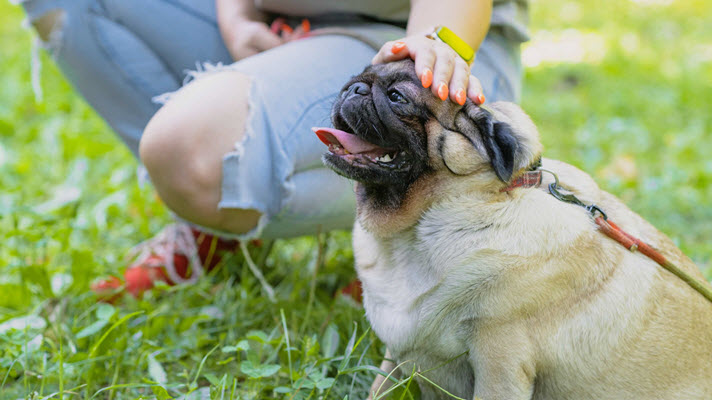Like us, some dogs have a hard time in new environments, especially daycares. Dog owners and daycare workers must understand dog behaviour to keep all guests happy and safe. We have compiled some of the best dog behaviour tips for you to use with our dog daycare software to ensure your daycare is a five-star puppy treat.
The Secret to Tail Wagging
The universal sign of a happy dog is a wagging tail, right? Well, not exactly. If a dog is flinging its tail around, it means it is emotionally stimulated. Because dogs are happy-go-lucky creatures, this emotional stimulation is often due to happiness or excitement, but it could also be fear or frustration. Our first dog behaviour tip is to pay attention to the speed and position of the tail.
Tail Speed
A relaxed dog wags its tail in a slow side-to-side motion, the type of infectious wag that shakes its way up the whole body, creating that iconic wiggle you’ll see when your dog greets you after work.
In general, the faster the wag, the higher the stimulation level, which can be good or bad. A quick, twitchy wag suggests your dog may have woken up on the wrong side of the bed.
Tail Position
Just as a confident person’s head will always be held high, the higher the tail, the more confident a dog feels. However, if it is too high and sticking up like a flagpole, it may suggest aggression, and you’ll want to keep a close eye on it.
On the flip side, if the dog is hiding its tail between its legs, this indicates it is scared or nervous and may need to be removed from the situation to feel better.
Understanding Dogs Through Body Language
Understanding dog posture and what it means is an invaluable dog behaviour tip to take into your daycare. Here are a few body language signs to keep in mind:
- A dog hunched over, getting as close to the ground as possible, indicates fear.
- A dog rolling on its back and assuming the belly-rubbing position is either relaxed or anxious – use content clues and our other dog behavioural tips to determine which.
- A dog shifting its weight forward and standing tall may be aggressive or a little over-excited.
You don’t have to speak dog to know how it is feeling. Body language will get you most of the way there once you know how to decipher it.
Manage Your Busy Daycare Business with PetLinx
When owners book their furry friends into a dog daycare, they are looking for a home away from home, somewhere their beloved pooch feels comfortable and has fun. You can create just such an environment when utilising our dog behavioural tips.
Need more help managing your dog daycare? Head over to PetLinx for a free trial of our dog daycare app and keep track of your four-legged customers and their two-legged owners. Manage your daycare schedule, bookings, and more with PetLinx today.


